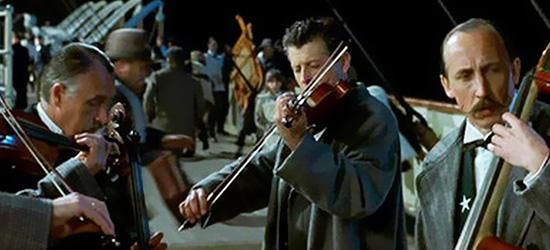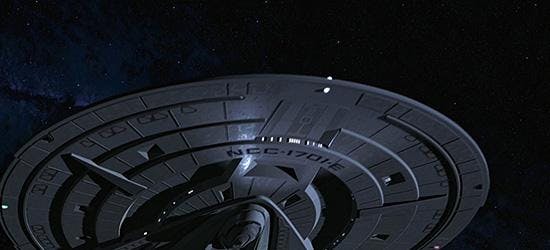Published Oct 29, 2015
How Titanic's Music (almost) Influenced Insurrection
How Titanic's Music (almost) Influenced Insurrection

Released a year before Star Trek: Insurrection, James Cameron’s Titanic became a celebrated and successful motion picture event. Part of its power was certainly due to its music under the composition and direction of James Horner (composer of Star Trek II: The Wrath of Khan and Star Trek III: The Search for Spock). An especially poignant use of music in the film was Horner’s arrangement of Sarah Flower Adams’ hymn “Nearer, My God, To Thee,” performed by I Salonisti. The ship’s band chooses to stay behind and plays the song to calm the passengers.

With filming set to begin during Spring of 1998, specific details about Star Trek: Insurrection’s new cultures, most especially the Ba’ku, were being still being imagined and reimagined when Titanic premiered. Even before Titanic was in theaters, the Insurrection creative team had already discussed the idea that music would play an important role in helping to define the Ba’ku, and more importantly, serve as an emotional connection between the audience and the agricultural and peaceful artisan community. Some of the ideas included that of director Jonathan Frakes, who had previously suggested that Jean-Luc Picard’s Ressikan flute, introduced in "The Inner Light” and making appearances in the episode “Lessons” and – eventually - the film Star Trek Nemesis, be utilized to help make the musical connection.About three weeks after Titanic’s premiere, Insurrection’s screenwriter, and one of Star Trek’s most-talented and important producers, writers and creators, Michael Piller, sent a memo (dated January 20, 1998). He wrote about the emotional scene in Titanic when the violin player stays behind, followed by his fellow players, as the ship sinks. The scene inspired Piller to think about the role of music in the upcoming Trek production. Piller suggests in the memo that some kind of Ba’ku instrument like chimes perhaps be introduced during the scene when Picard first beams to planet’s surface to “rescue” the not-quite Starfleet hostages. The instrument and musician could then become an emotional touchstone that the film returns to occasionally. Piller cautions that whatever instrument is created, it must be portable so that it could be believable carried into the mountains during the evacuation. Piller believed that by having Ba’ku musicians featured, it would provide an emotional connection to the extras who evacuate along with the primary characters.Eventually, the idea of using a Ba’ku version of the Titanic musicians was never fully realized. The film instead focuses on a variety of other kinds of Ba’ku artistic endeavors, from blacksmithing to break-making. The evacuation scene does use big chimes/gongs to sound the alarm, as Piller suggests in his January 20th memo, but that is mostly the extent of the musical elements of the Ba’ku that are given primary focus. (As an aside, that doesn’t limit the power of the Ba’ku evacuation scene as filmed and edited because Jerry Goldsmith’s music, Herman Zimmerman’s village designs, Jonathan Frakes’ direction, the special effects, stunts, and acting all combined to create a visually dynamic, original and exciting sequence).

However, there is a Titanic-band of sorts featured in Insurrection – during the diplomatic reception with the Evora onboard the U.S.S. Enterprise E at the start of the film, the audience is treated to classical music performed by a small Starfleet orchestra that gets quite a few close-ups. Additionally, Earth music makes another appearance when Picard, Worf, and Data sing Gilbert and Sullivan. Picard even does a little dance to “Make Over Mambo” from composer Alan Silvestri. The inclusion of this music in Insurrection - from “Piano Sonata No. 8 “Pathetique”, 1st movement” by Beethoven to “A British Tar” - demonstrates how using real-world music in Star Trek’s futuristic settings connects the audience emotionally to the characters.

